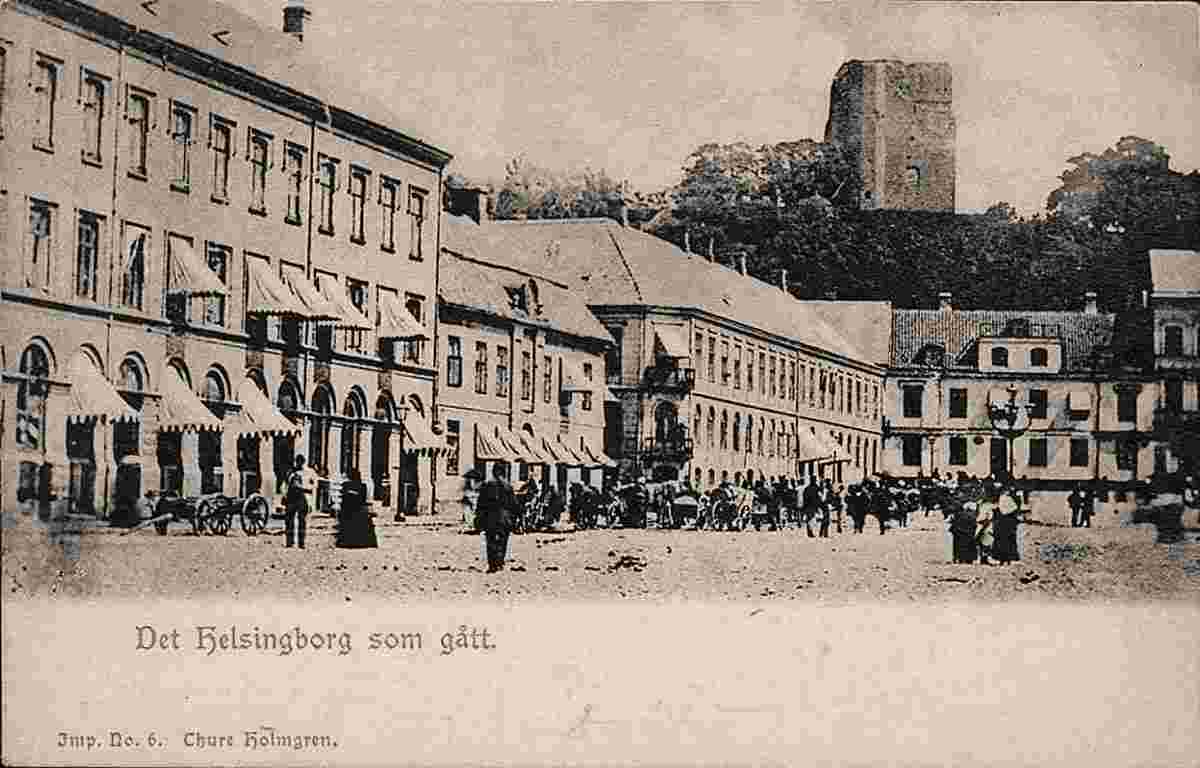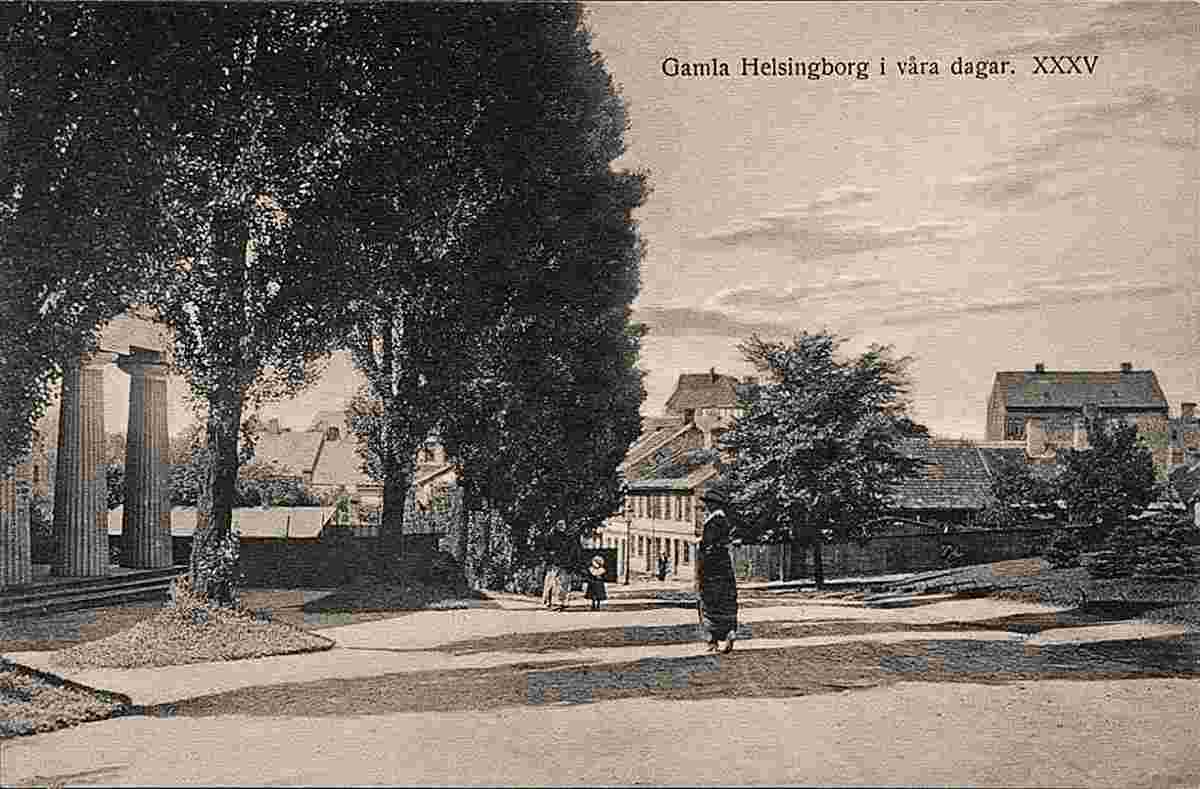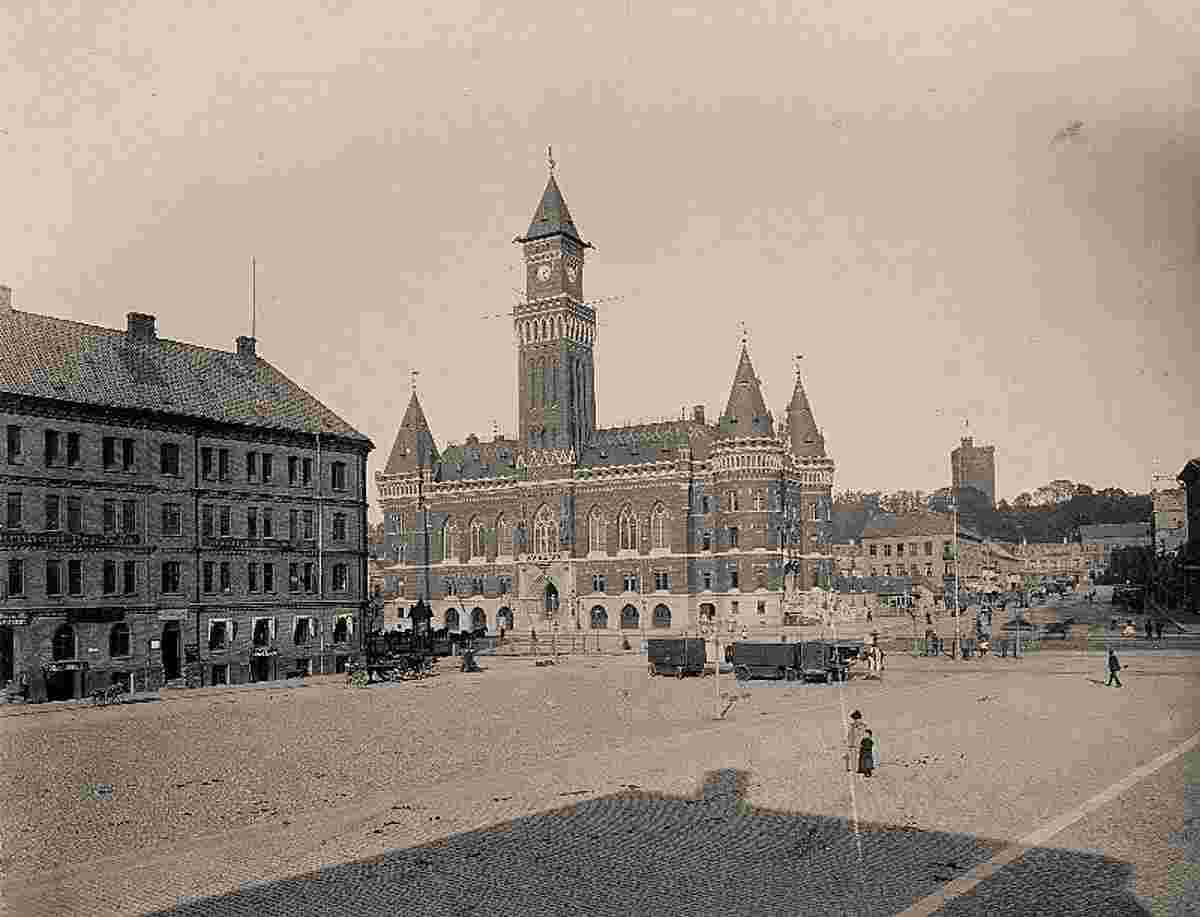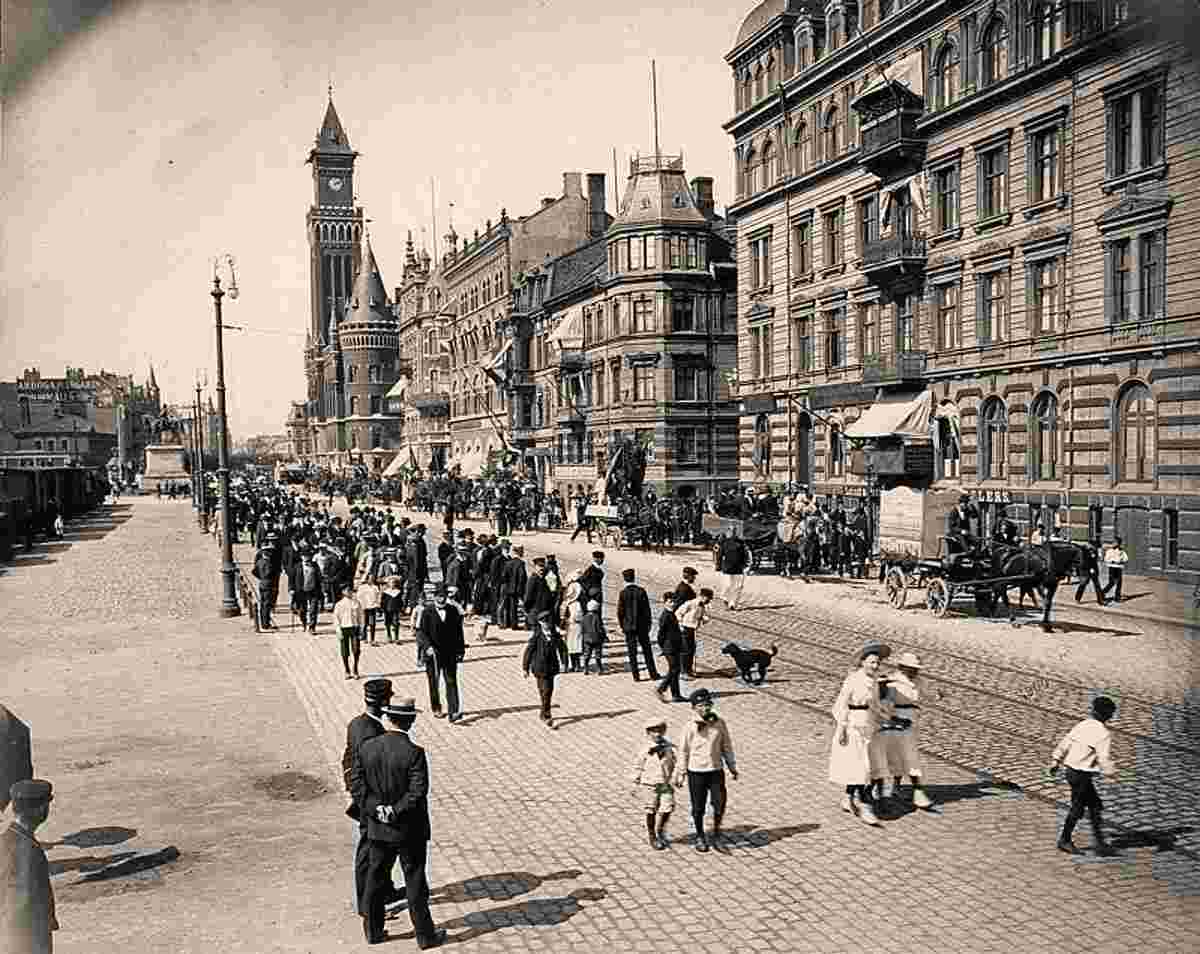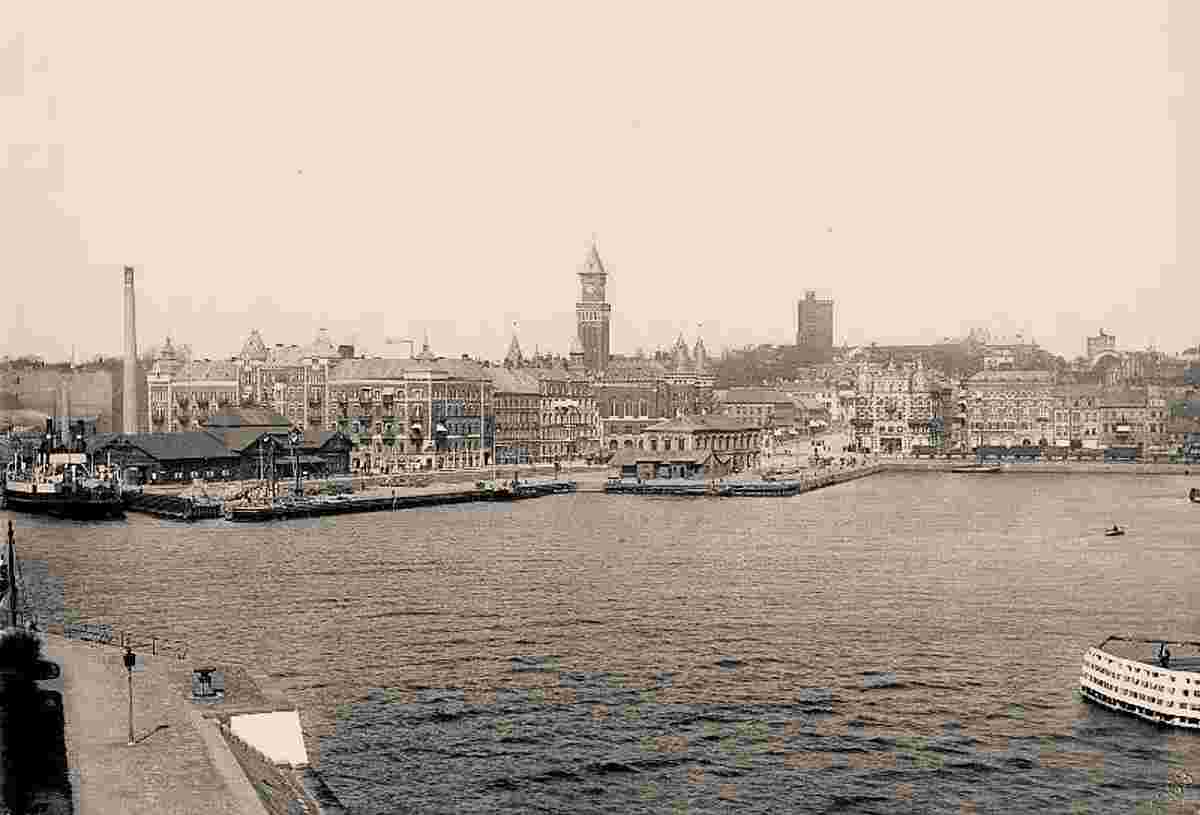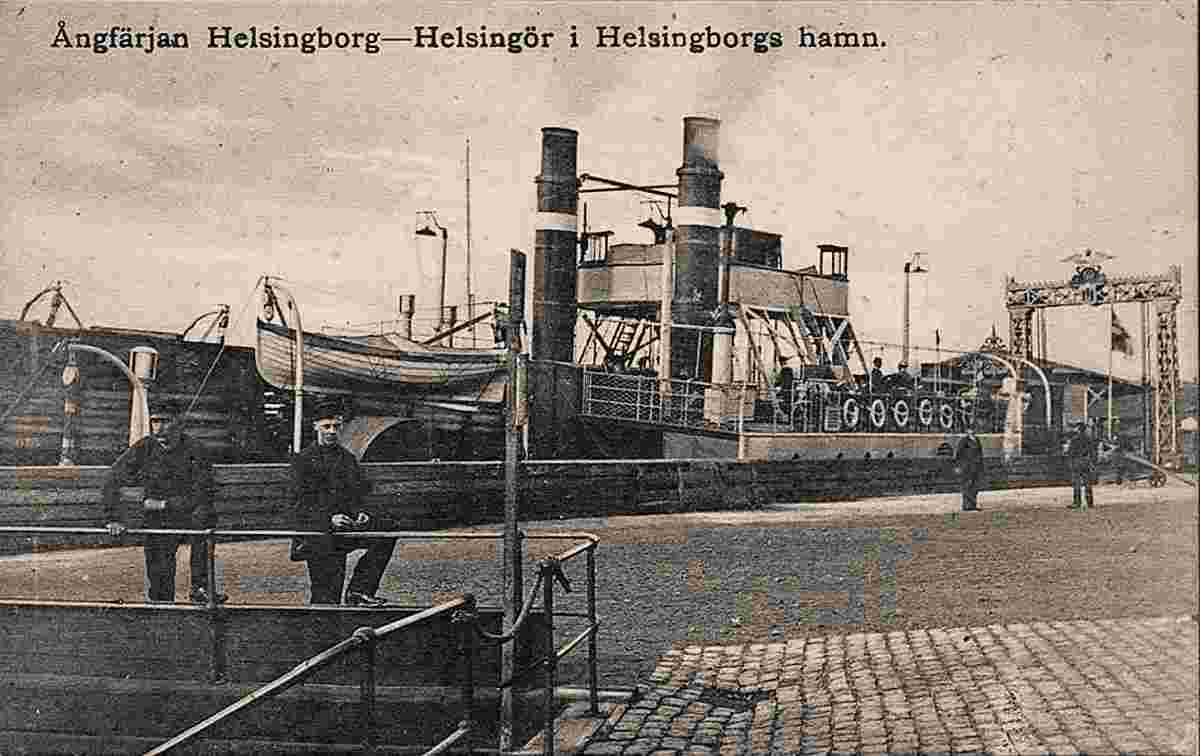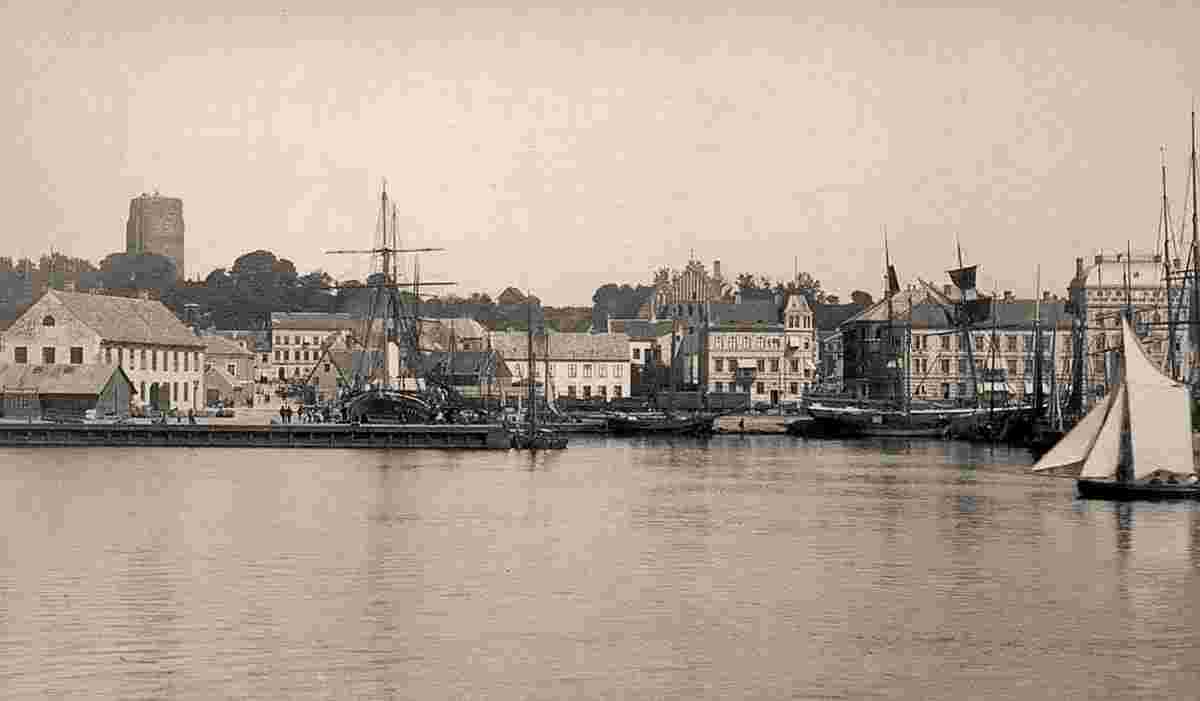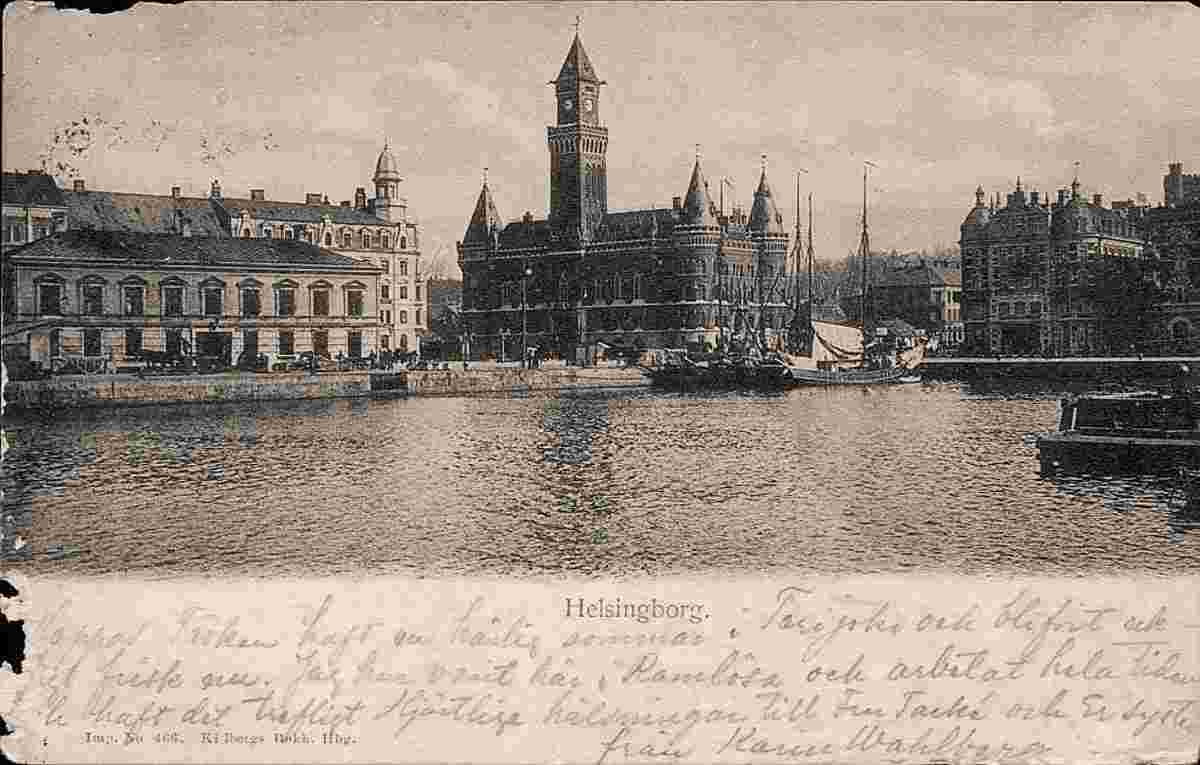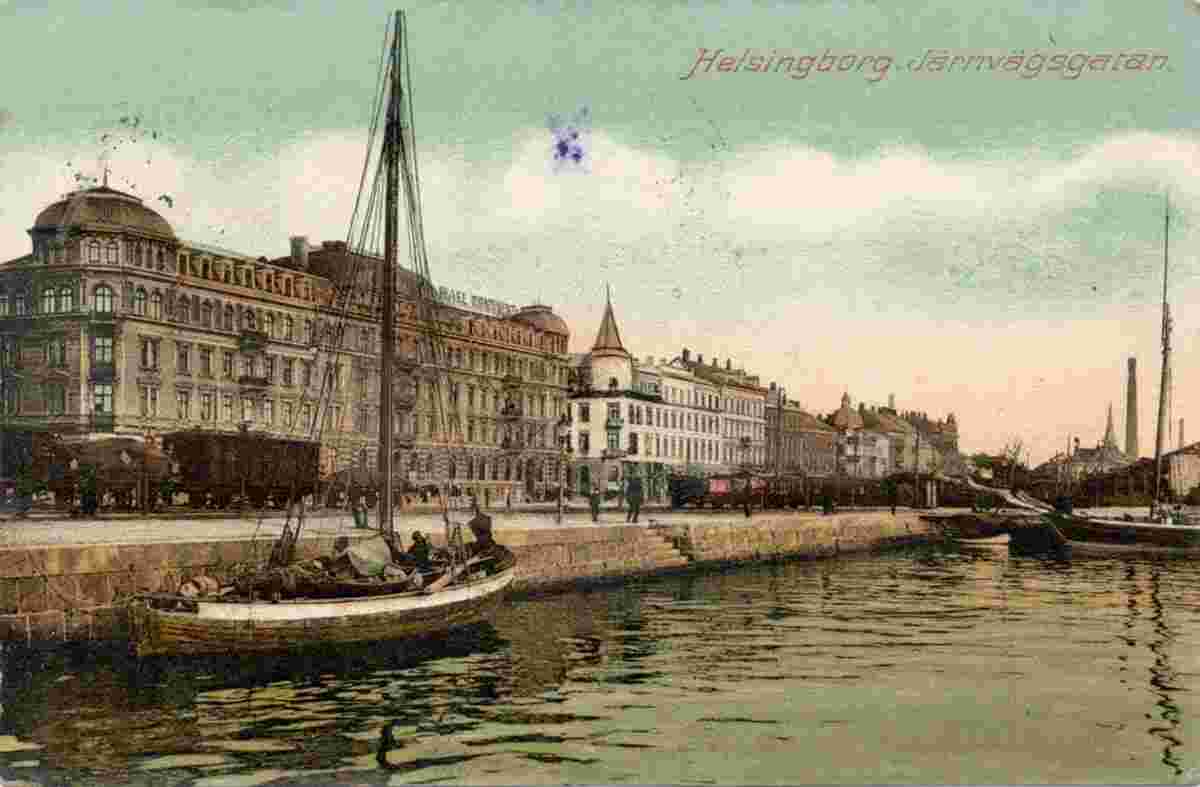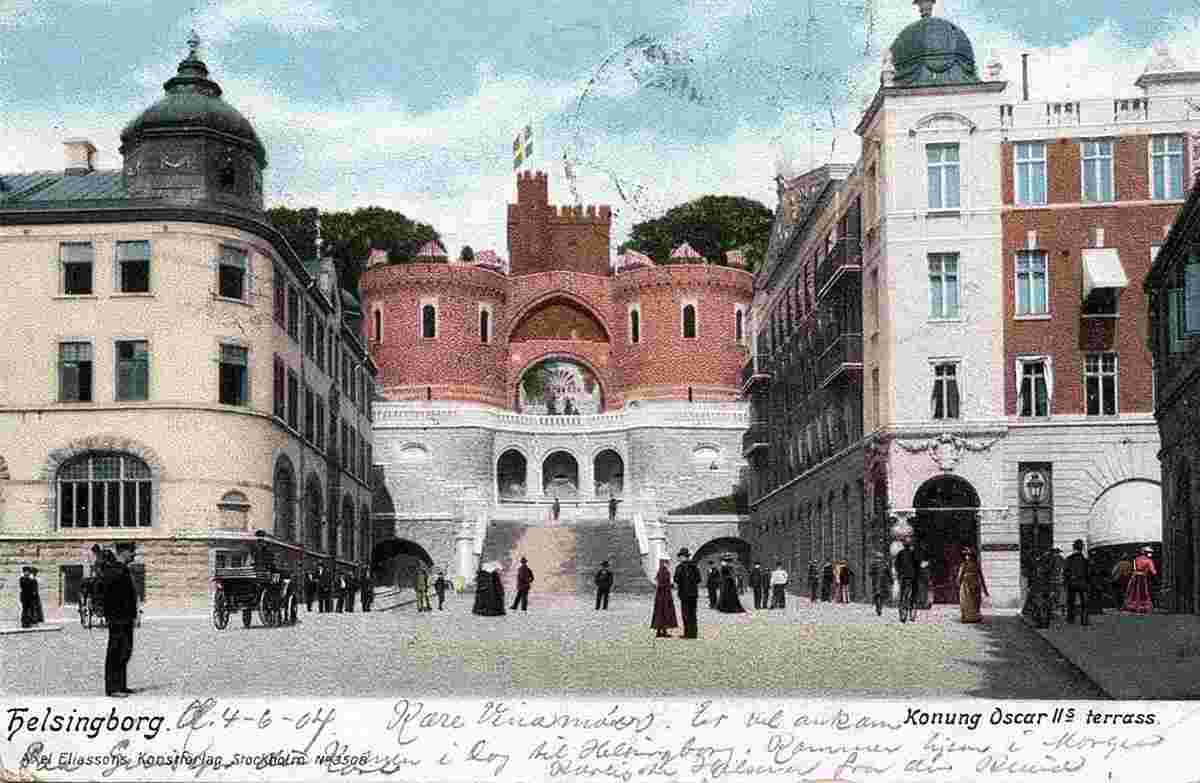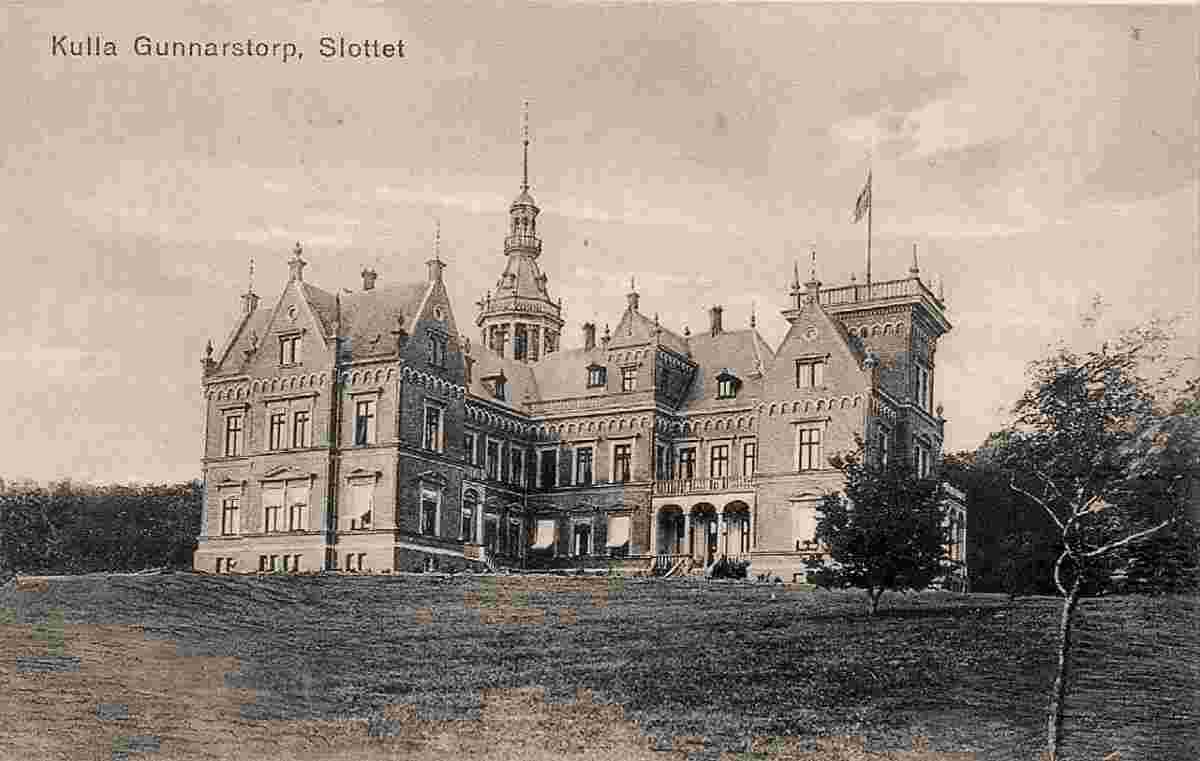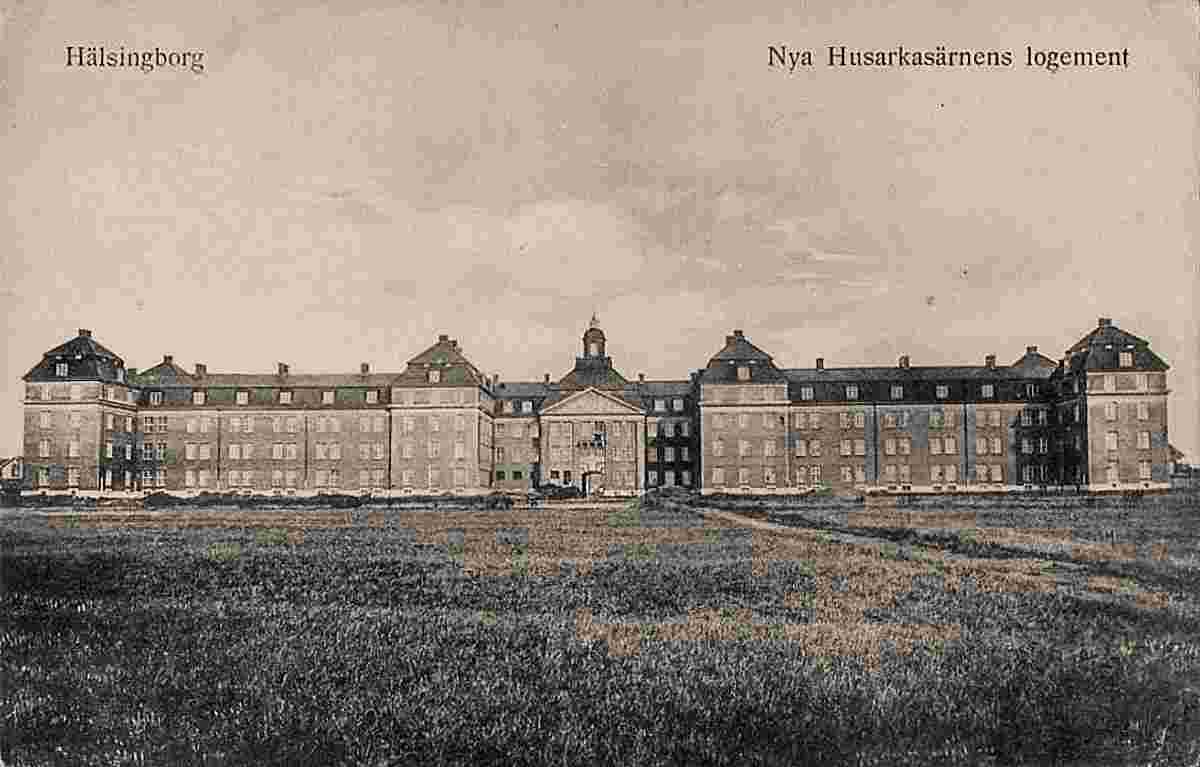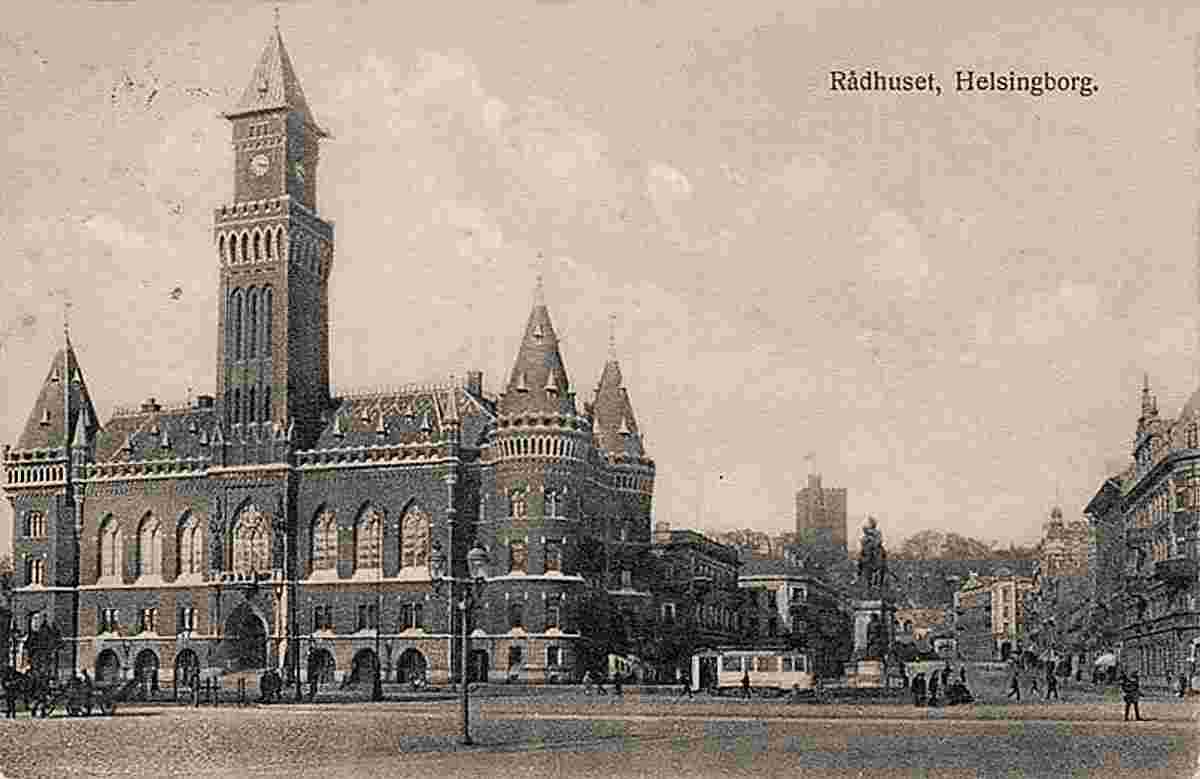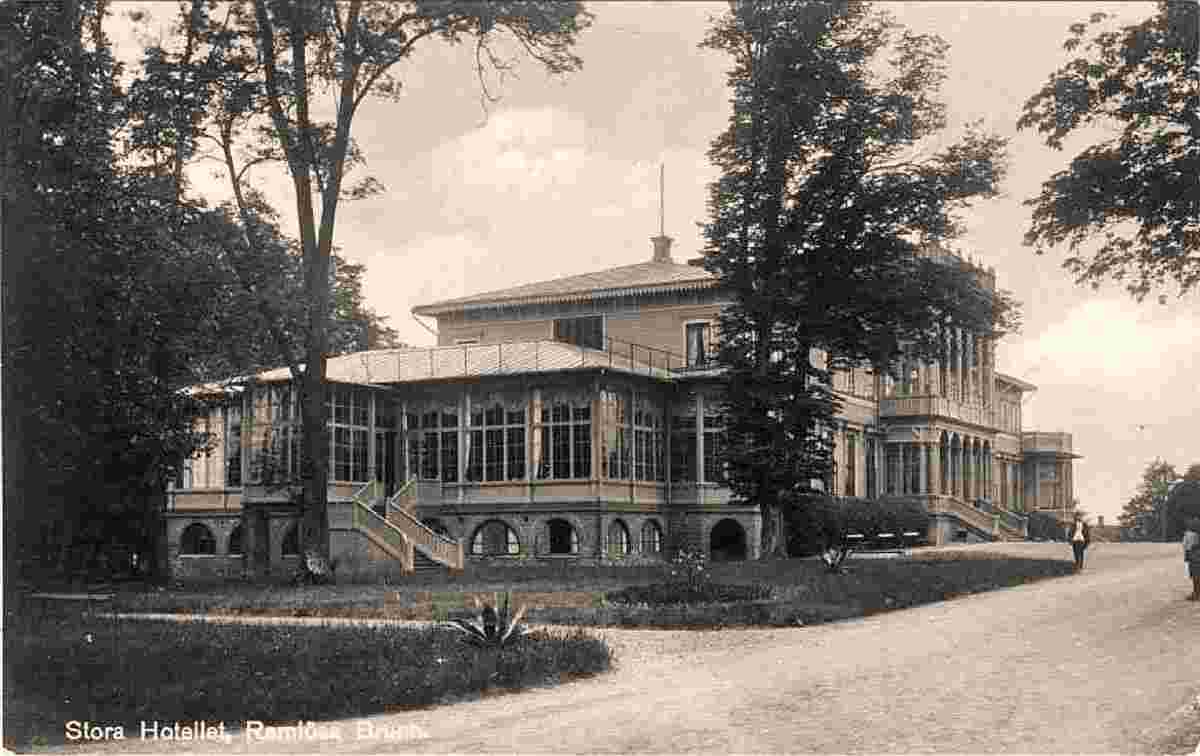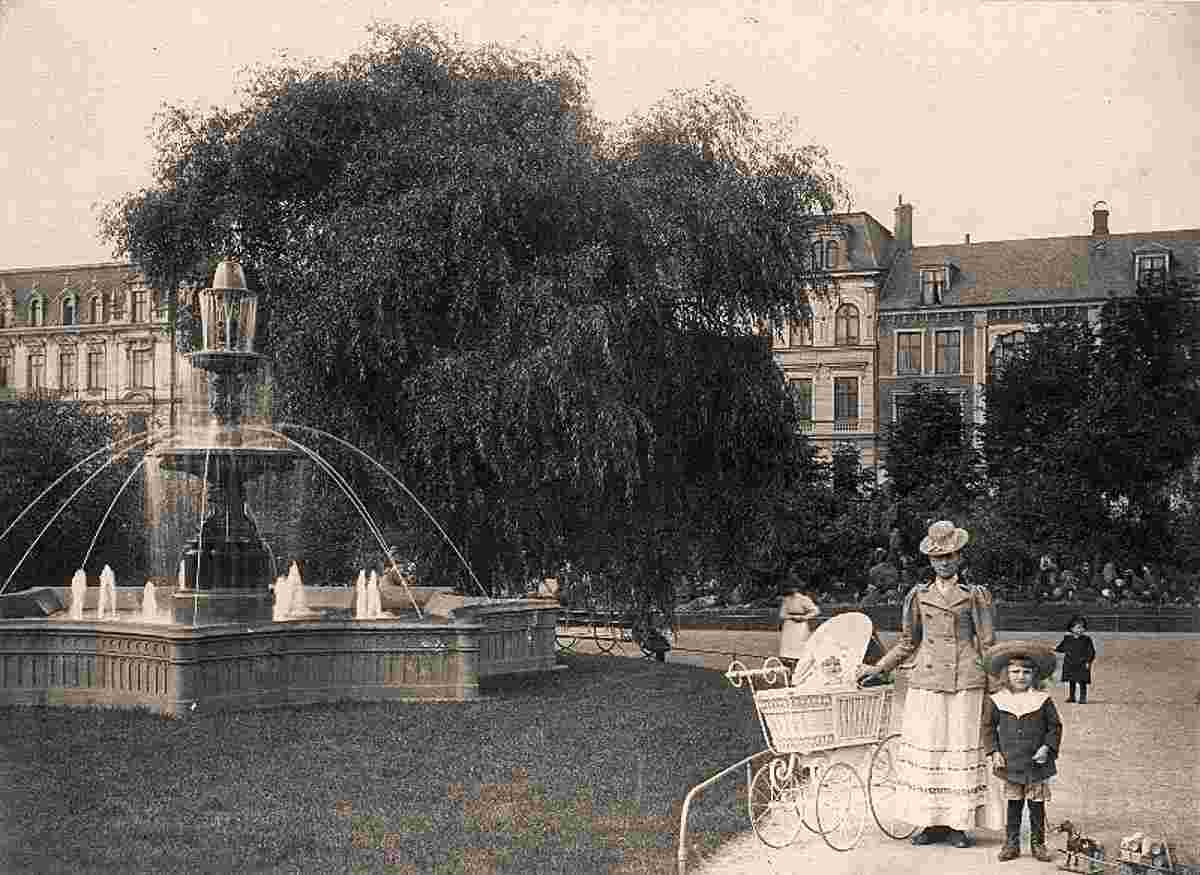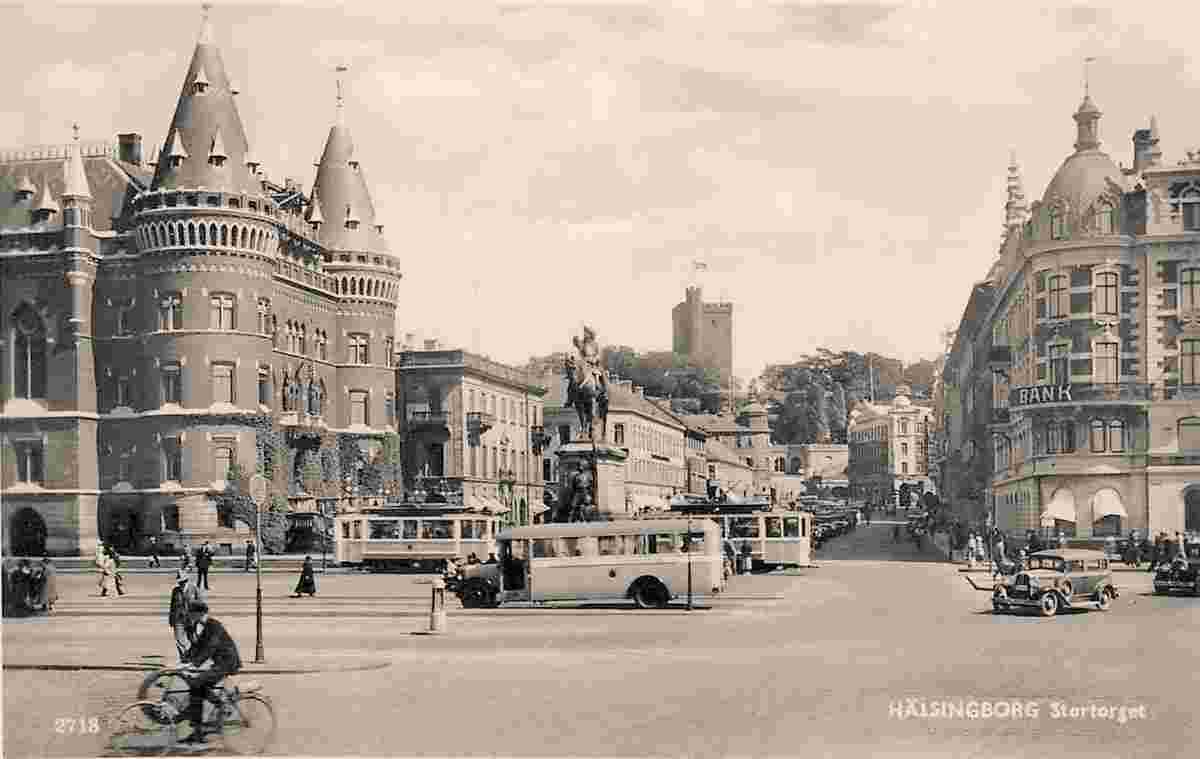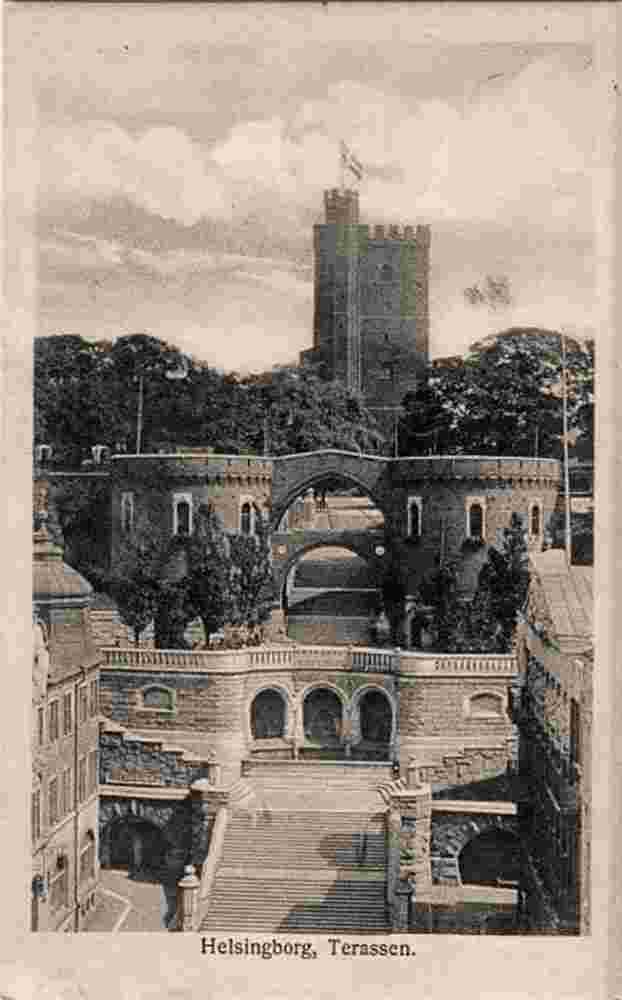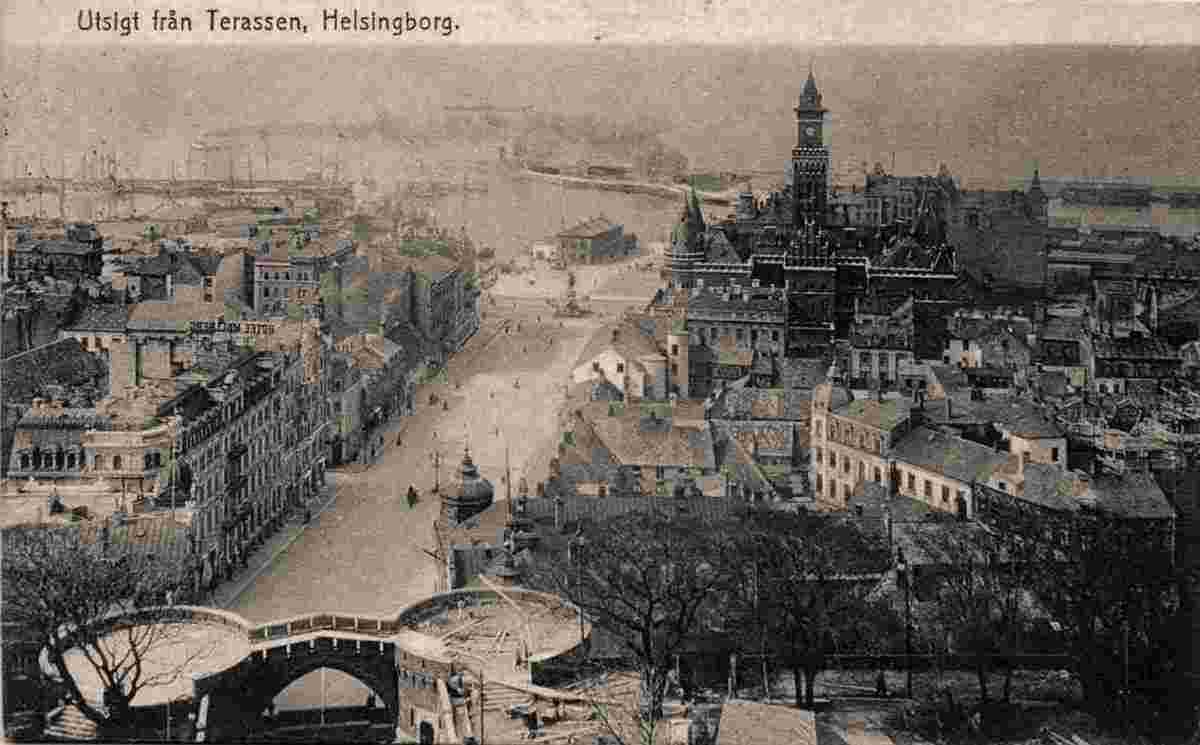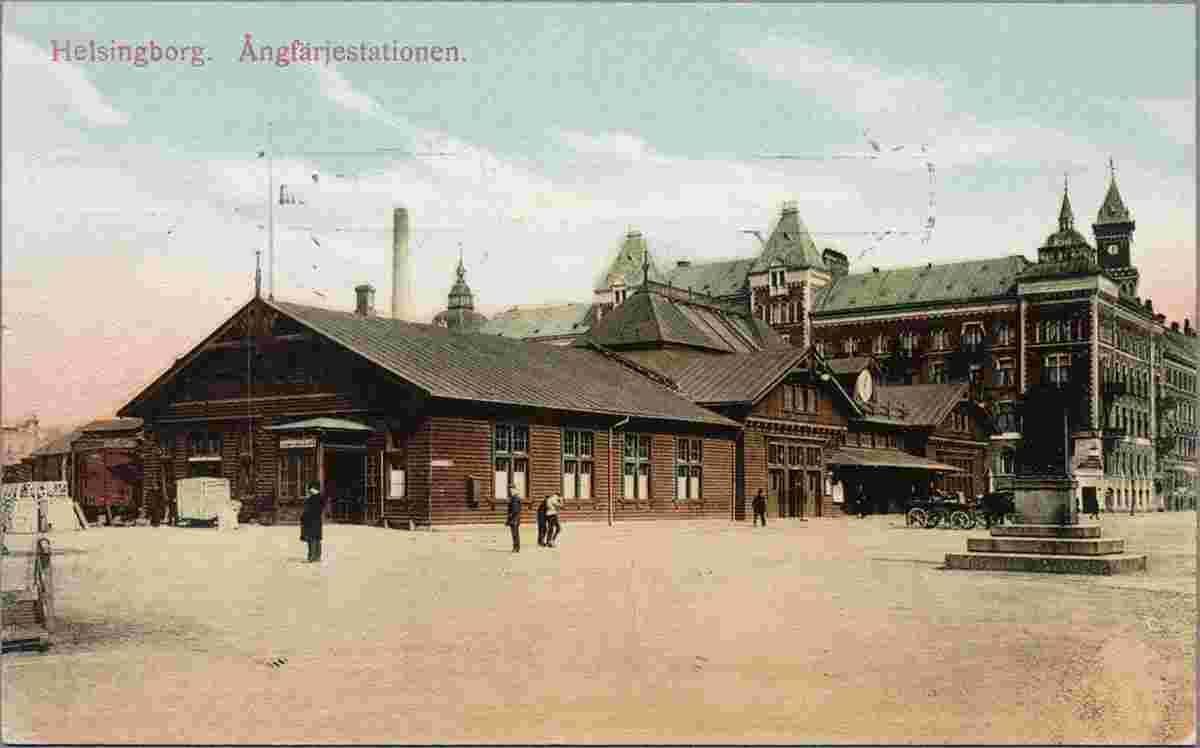Historical and old photos of Helsingborg, Scania
HistoryHelsingborg is one of the oldest cities of what is now Sweden. It has been the site of permanent settlement officially since 21 May 1085. Helsingborg's geographical position at the narrowest part of Øresund made it very important for Denmark, at that time controlling both sides of that strait. From 1429 Eric of Pomerania introduced the Sound Dues, a levy on all trading vessels passing through the sound between Helsingør and Helsingborg. This was one of the main sources of income for the Danish Crown. Crossing traffic, like fishermen, were not subject to the tax, which was initially directed against the Hanseatic League. Following the Dano-Swedish War (1657-1658) and the Treaty of Roskilde Denmark had to give up all territory on the southern Scandinavian peninsula, and Helsingborg became part of Sweden. King Charles X Gustav of Sweden landed here on 5 March 1658 to take personal possession of the Scanian lands and was met by a delegation led by the bishop of the Diocese of Lund, Peder Winstrup. At that time the town had a population of barely 1,000 people. Its situation on a conflict-ridden border caused problems for Helsingborg. Denmark recaptured Scania twice, but could not hold it. The last Danish attempt to regain Scania was in 1710, when 14,000 men landed on the shores near Helsingborg. The Battle of Helsingborg was fought on the 28th of February just outside the city, which was badly affected. It took a long time to recover; even in 1770 the city had only 1,321 inhabitants and was still growing slowly. On 20 October 1811 Jean-Baptiste Bernadotte, Marshal of France and crown prince-elect of Sweden (later king Charles XIV John) took his first step on Swedish soil in Helsingborg on his journey from Paris to Stockholm. In World War II, Helsingborg was among the most important drop-off points for the rescue of Denmark's Jewish population during the Holocaust. Adolf Hitler had ordered that all Danish Jews were to be arrested and deported to the concentration camps on Rosh HaShanah, the Jewish New Year which fell on 2 October 1943. When Georg Ferdinand Duckwitz, a German maritime attaché received word of the order on 28 September 1943, he shared it with political and Jewish community leaders. Using the name Elsinore Sewing Club (Danish: Helsingør Syklub) as a cover for messages, the Danish population formed an underground railroad of sorts, moving Jews away from the closely watched Copenhagen docks to spots farther away, especially Helsingør, just two miles across the Øresund from Helsingborg. Hundreds of civilians hid their fellow Danish citizens -- Jews -- in their houses, farm lofts and churches until they could board them onto Danish fishing boats, personal pleasure boats and ferry boats. In the span of three nights, Danes had smuggled over 7200 Jews and 680 non-Jews (gentile family members of Jews or political activists) across the Øresund, to safety in Sweden, with one of the main destinations at Helsingborg. From the middle of the 19th century onwards Helsingborg was one of the fastest growing cities of Sweden, increasing its population from 4,000 in 1850 to 20,000 in 1890 and 56,000 in 1930 due to industrialization. From 1892 a train ferry was put in service, connecting Helsingborg with its Danish sister city Helsingør. A tramway network was inaugurated in 1903 and closed down in 1967. Origin: en.wikipedia.org | ||||||||||||||||||||
 |
Historical and old photos of Helsingborg, Scania
Historiska och gamla bilder från Helsingborg, Scania |
| Main page • Countries of Europa • Cities of Sweden |
| Robinson Rd, CB 13862 Nassau, NP, The Bahamas |
